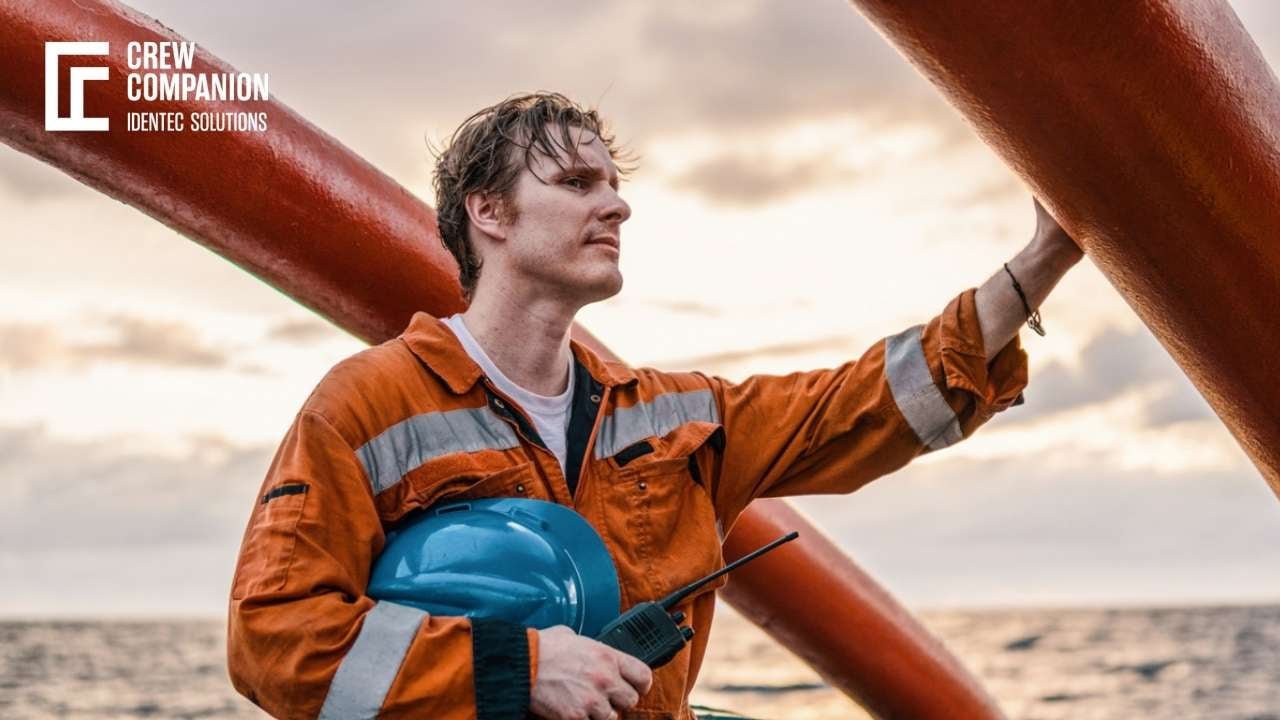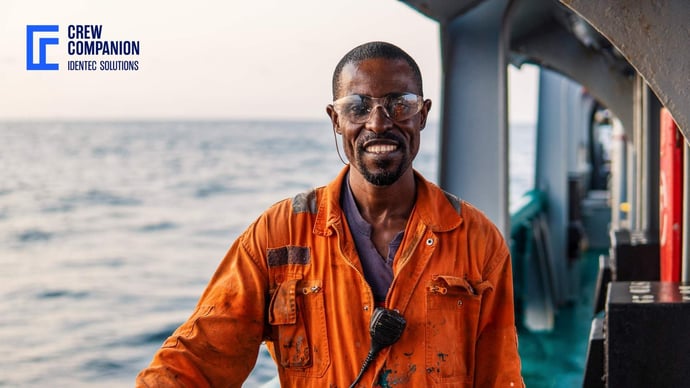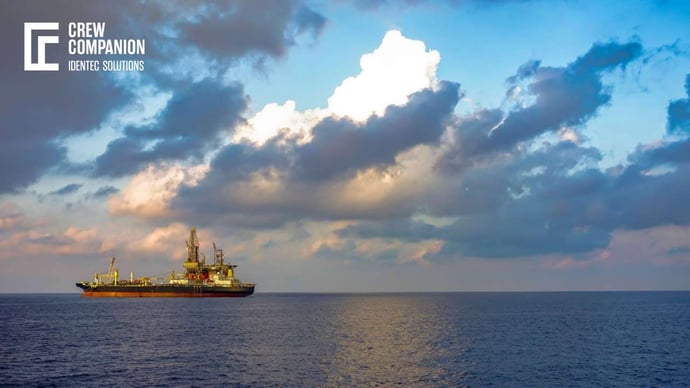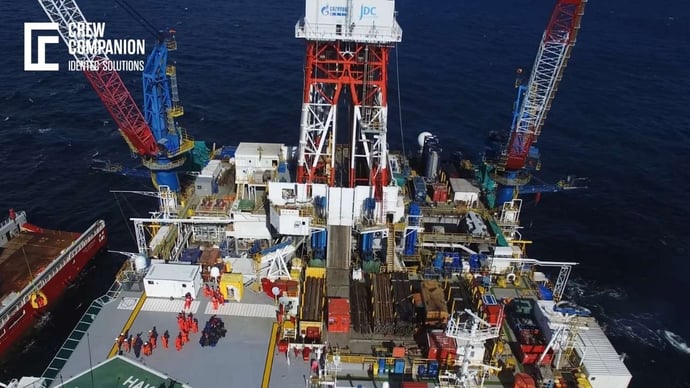The Great Crew Change and its impact on offshore safety
| Written by David Gordon
The offshore energy industry has seen unprecedented growth in recent years, as more and more countries turn to sea-based sources of energy. However, this rapid growth has also led to safety issues that can potentially put workers at risk. The Great Crew Change puts an additional emphasis on remaining and strenghtening safety on offshore installations in the oil and gas industry.
In this article, we'll explore the safety risks that are present in the offshore energy sector, and look at the measures that can be taken to improve safety. These include training, technology, regulation, and education. By implementing these measures, the offshore energy sector can ensure that its workers are safe and secure.

No video selected
Select a video type in the sidebar.
As companies today understand that auditing and reporting, a safety plan, and training promote a culture of safety and go hand-in-hand with business growth, there are still factors that challenge the existing oil rig safety standards: inconsistent level of commitment to safety, a lack of trained safety professionals and seasoned personnel being replaced.
Offshore Industry challenges
In the future, companies in the offshore sector will be forced to lower costs to attract necessary investments for the industry's looming decarbonisation while staying competitive. Cutting costs mandates excellent operational practices, lower technical risks, and better exploitation of smaller reservoirs, even in more difficult areas like the deep sea.
Besides that, “the Great Crew Change” may be one of the bigger challenges to the offshore industry in the coming years: as many experienced workers will retire, the cohort of late 30s to 50s is small. With retirement departs knowledge and experience, negatively affecting safety (e.g. emergency mustering) and productivity.
In Oil and Gas, most engineers and geoscientists are either over 55 or under 35. That said, most of the older employees will be retiring in the next 5 -10 years. With them goes invaluable know-how: real-world experience can't be learned in school or watching a YouTube video.
Practical experience in the field makes a veteran capable of making decisions, taking into account all the factors, risk, investment, and geologic aspects. This has implications for safety, too, directly and indirectly. Bad decisions lead to incidents, and decisions are made based on individual experience and available information (learn more about emergency mustering processes and offshore HSE).
What are the Safety Risks in the Offshore Energy Sector?
The offshore energy sector, including oil and gas extraction, drilling, and production, carries a variety of safety risks. Every year, offshore workers face hazards of water, extreme weather, and hazardous working conditions. Furthermore, offshore energy facilities can contain pollutants that can be hazardous to both workers and the environment.
Offshore oil and gas wells and production platforms are exposed to extreme weather conditions and include a number of potential risks. These include fires, explosions, and other accidents due to the high-pressure environment, hazardous materials, and complex machinery used in the production process. Additionally, strong winds and heavy seas can cause structural damage to offshore platforms, resulting in equipment failure and potential danger to workers.
Another major safety concern in the offshore energy sector is the use of potentially hazardous chemicals and materials. Exposure to these materials can lead to serious physical and psychological health problems. For example, oil and gas production can release volatile organic compounds (VOCs) into the atmosphere, resulting in ozone depletion and respiratory problems.
The unique environment offshore also presents unique safety risks for workers. These include falls, slips, and trips resulting from slick surfaces, unsafe locations, and hazardous conditions. Additionally, offshore workers face the risk of drowning and other water-related accidents.
Finally, offshore energy projects can potentially cause environmental degradation and damage. Burning fossil fuels produces pollution and emissions that can harm the environment and lead to long-term health issues for local residents. Furthermore, the construction of offshore energy infrastructure can harm marine life, including fish, coral, and other species.
Learn more about the offshore oil industry in our latest article "North Sea Oil Fields Map".
Offshore Safety - A Priority for the Offshore Energy Sector
The offshore energy sector is responsible for oil and gas production and energy transportation from offshore areas. As such, the safety of workers and the environment are of utmost importance. The risks associated with working in offshore facilities are both physical and psychological, and thus strong safety measures need to be put in place to ensure the safety of workers and the environment.
The risks associated with working in offshore energy operations include hazardous weather conditions, hazardous substances, potential fire and explosions, and potential physical injuries. Companies need to have comprehensive safety policies and procedures to address these risks. These policies should include guidelines on using personal protective equipment, maintaining fire safety equipment, and implementing emergency evacuation procedures. Companies should also ensure that their workers are adequately trained in the use of safety tools, such as life jackets and breathing apparatus.
Additionally, the offshore energy sector should focus on developing technologies to reduce the risks associated with offshore operations. This could include developing automated systems to monitor environmental conditions and implementing communication systems such as satellite phones. Such technologies can help improve safety standards in the sector and provide assurance of greater safety in offshore operations.
Another important factor in strengthening safety measures in the offshore energy sector is preventing accidents. Companies should promote a safety culture among their workers and provide adequate training to ensure that workers know the risks associated with their work and the importance of following safety procedures. It is also essential that companies conduct regular inspections of the facilities to ensure the safety of workers and the environment.

What Measures Can Be Taken to Improve Offshore Safety?
The safety of offshore energy operations is of paramount importance, and a number of measures can be taken to ensure that personnel, equipment and the environment remain safe. These measures must be implemented, evaluated and improved over time to maintain the highest safety standards (see also our article about "emergency response time offshore").
One of the best ways to improve offshore safety is to ensure that all personnel have prompt and accurate access to relevant safety information. This includes all relevant regulations, protocols and procedures related to the specific offshore operations conducted. Having access to this information allows personnel to understand the risks associated with the task they are undertaking and take the necessary action to remain safe. This information should be accessible to all personnel, regardless of their experience level.
Effective training is also a key factor in maintaining offshore safety. All personnel should be adequately trained in the roles and responsibilities related to their positions, as well as any safety protocols and procedures. This training should be tailored to the specific offshore operations that the personnel are involved in and should be updated periodically to ensure that everyone is kept up to date.
The implementation of safety technologies also helps to improve offshore safety operations. For example, the inclusion of automation and real-time monitoring of operations allows personnel to respond quickly to any potential dangers that may occur. This allows for the rapid deployment of emergency response teams and the safe evacuation of personnel in the event of an emergency.
Experience-based decision-making is another way to improve offshore safety. By considering personnel's collective experience, a company can ensure that the right decisions are being made in any challenging situation. This also helps ensure that personnel are aware of any potential risks associated with their operations and allows them to take measures to mitigate them.
Finally, safety audits and inspections provide a useful way to measure and evaluate the safety of offshore operations. These audits and inspections should be conducted regularly and should involve an independent third party or an experienced team. This allows for a thorough evaluation of the safety measures in place and allows for any corrective actions to be taken in a timely manner.
Training
Comprehensive and appropriate training is crucial for offshore personnel to follow safety protocols and handle offshore safety issues effectively, reducing the likelihood of injuries, accidents, or fatalities in the offshore energy sector.
Technology
Technology is crucial for managing safety risks in the offshore energy sector. With digitalization and automation, companies can quickly respond to emergencies and detect potential hazards before they become a problem. Seismic surveys and remotely operated vehicles are some examples of technologies that improve safety and risk management, ensuring a safe working environment for workers and investors.
Regulation
Governments must establish regulations that cover all safety areas, from environmental concerns to worker safety compliance, and regularly monitor and enforce them to strengthen offshore safety measures in the energy sector. Clear guidelines with rules and enforcement processes for any infractions should be set from the outset. Stringent regulations will reduce risk and improve safety measures.
Education
Education is essential for strengthening safety measures in the offshore energy sector. Personnel and staff must receive comprehensive safety and emergency training, including knowledge of safety protocols, equipment, incident response, and risk assessment. Regular updates on new safety practices and procedures should be provided, and adherence to safety protocols emphasized to ensure the safety of all involved in offshore energy operations. Improved offshore safety education can ultimately benefit the sector as a whole.
FAQ
What is the Great Crew Change, and how does it affect offshore safety?
The Great Crew Change refers to the demographic shift in the offshore energy industry, where a significant number of experienced workers are reaching retirement age. This transition is causing a generational gap, with fewer workers in their late 30s to 50s ready to step into these critical roles. As older workers retire, their valuable knowledge and experience, especially in high-risk situations like emergency mustering, are lost. The lack of experienced professionals can lead to compromised decision-making and increased safety risks. Addressing this gap is crucial for maintaining safety standards and ensuring that newer workers are adequately trained to handle the complexities of offshore operations.
What measures can companies take to improve safety in the offshore energy sector?
To improve safety in offshore energy operations, companies need to implement several key strategies. Comprehensive training programs tailored to specific offshore activities are essential to equip workers with the skills and knowledge to manage risks effectively. The adoption of new technologies, such as real-time monitoring systems and automation, can help identify potential hazards early and enable swift responses to emergencies. Additionally, regular safety audits, inspections, and adherence to regulations can ensure that safety protocols are followed consistently. Developing a strong safety culture through education and fostering experience-based decision-making can also significantly enhance safety in offshore environments.
Takeaway
The offshore energy sector is a high-risk sector with potential catastrophic losses. To ensure the safety of personnel and facilities, it is essential to take comprehensive measures - from employee training to technology implementation - to reduce the risk of accidents and prevent fatalities. Regulations, codes of conduct, and educational resources must be put in place to ensure that safety guidelines are properly followed, and regular reviews should be conducted to confirm that safety standards are maintained. Taking a proactive approach to safety awareness and implementing these measures can minimise the risk of offshore accidents, and the sector can remain a secure and profitable industry (find out more about the North Sea oil history!).
What is next?
Training is unavoidable, but the question remains: How to transfer knowledge in time and how to gain lost knowledge effectively? To answer this question, we provided a longer piece for you: best practices in offshore safety training.
Dive deeper into one of our main topics: Personnel on board
Sources:
(1) https://balancia.co.id/the-crucial-role-of-crew-change-in-the-shipping-industry/
(2) https://www.offshore-energy.biz/crews-mark-day-of-the-seafarer-between-a-rock-and-a-hard-place-as-crew-change-crisis-continues-to-brew/
Note: This article was updated on the 11th of October 2024






